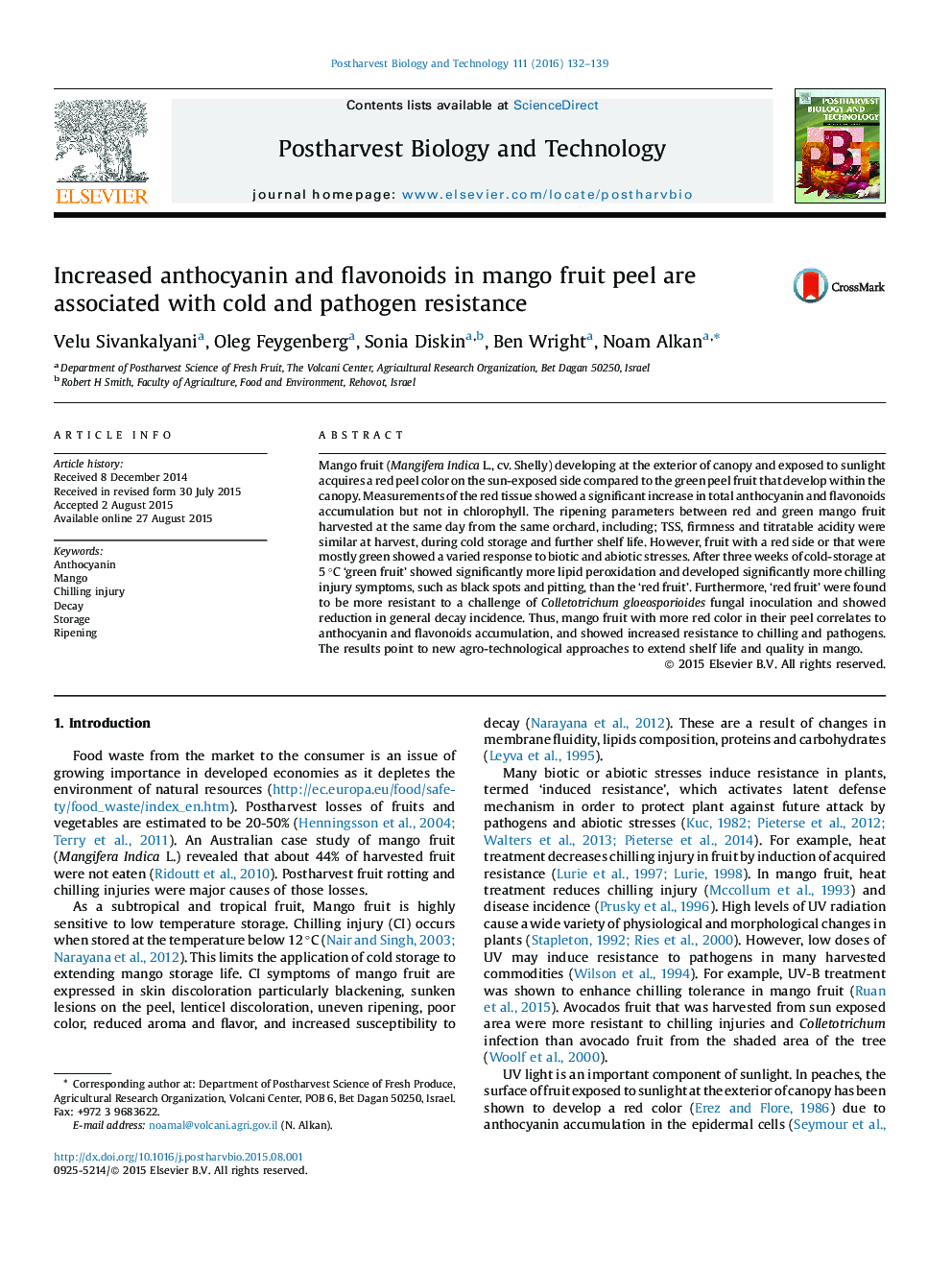| Article ID | Journal | Published Year | Pages | File Type |
|---|---|---|---|---|
| 4517865 | Postharvest Biology and Technology | 2016 | 8 Pages |
•Red peel of mango fruit accumulated anthocyanin and flavonoids.•Red peel of mango fruit did not influence the ripening parameters.•Red peel, anthocyanin, and flavonoids correlated with chilling resistance.•Red peel, anthocyanin, and flavonoids correlated with anthracnose resistance.
Mango fruit (Mangifera Indica L., cv. Shelly) developing at the exterior of canopy and exposed to sunlight acquires a red peel color on the sun-exposed side compared to the green peel fruit that develop within the canopy. Measurements of the red tissue showed a significant increase in total anthocyanin and flavonoids accumulation but not in chlorophyll. The ripening parameters between red and green mango fruit harvested at the same day from the same orchard, including; TSS, firmness and titratable acidity were similar at harvest, during cold storage and further shelf life. However, fruit with a red side or that were mostly green showed a varied response to biotic and abiotic stresses. After three weeks of cold-storage at 5 °C ‘green fruit’ showed significantly more lipid peroxidation and developed significantly more chilling injury symptoms, such as black spots and pitting, than the ‘red fruit’. Furthermore, ‘red fruit’ were found to be more resistant to a challenge of Colletotrichum gloeosporioides fungal inoculation and showed reduction in general decay incidence. Thus, mango fruit with more red color in their peel correlates to anthocyanin and flavonoids accumulation, and showed increased resistance to chilling and pathogens. The results point to new agro-technological approaches to extend shelf life and quality in mango.
Graphical abstractFigure optionsDownload full-size imageDownload as PowerPoint slide
